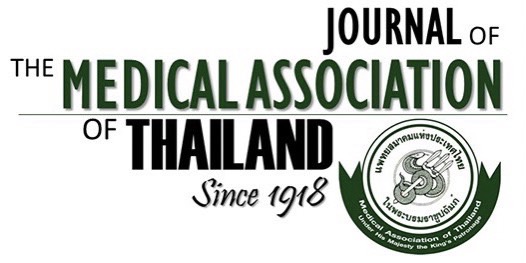Phenolic and Flavonoid Contents of Thai Rice Extracts and Their Correlation with Antioxidant Activities using Chemical and Cell Assays
Pintusorn Hansakul PhD*, Umarat Srisawat MSc*, Arunporn Itharat PhD**, Nusiri Lerdvuthisopon PhD*
Affiliation : * Department of Preclinical Science, Faculty of Medicine, Thammasat University, Rangsit Campus, Klong Luang, Pathumthani, Thailand ** Department of Applied Thai Traditional Medicine Center, Faculty of Medicine, Thammasat University, Rangsit Campus, Klong Luang, Pathumthani, Thailand
Background : Free radicals induce oxidative stress in various cell components, leading to certain diseases. Plant-derived
antioxidants have become a profitable alternative to prevent oxidative stress in cells due to adverse effects of some synthetic
antioxidants.
Objective : To determine the total phenolic and flavonoid contents and to evaluate the correlation between these two compounds
and their antioxidant properties in the ethanolic extracts of brown rice and rice bran from Thai rice cultivars: Sangyod red
rice and Dawk Mali 105 white rice using the chemical and cell assays.
Material and Method: Total phenolic and flavonoid contents in all of the rice ethanolic extracts were determined using the
colorimetric assays, as well as their antioxidant activity was analyzed through two chemical assays: DPPH radical-scavenging
and inhibition of lipid peroxidation assays, as well as through a cell-based assay: scavenging capacity against intracellular
superoxide in cells using DCF.
Results : All the rice extracts displayed their antioxidant activities in a dose dependent manner through different assays, which
were expressed as EC50 values. The DPPH scavenging assay revealed very high scavenging activity in both Sangyod brown
rice and rice bran extracts. Positive correlations between this activity and total phenolic and flavonoid contents suggest the
major free radical scavenging activity of such compounds. In contrast, the ethanolic extract of Sangyod rice bran exhibited
non-significant anti-lipid peroxidation activity relative to that of Sangyod brown rice and Dawk Mali 105 rice bran. Phenolic
content was correlated to some extent with anti-lipid peroxidation activity, whereas flavonoid content and such activity showed
a relatively weak correlation. Importantly, the cell-based assay also detected potent scavenging activity against superoxide
production in HL-60 cells pretreated with Sangyod extracts. The content of phenolics was a major contributor to this
scavenging activity including that of flavonoids but to a lesser extent.
Conclusion : These findings suggest that ethanolic extracts of brown rice and rice bran of Sangyod red rice can be promising
sources of potential natural antioxidants.
Keywords : Antioxidant activity, Pigmented rice, Brown rice, Rice bran, Ethanolic extract



